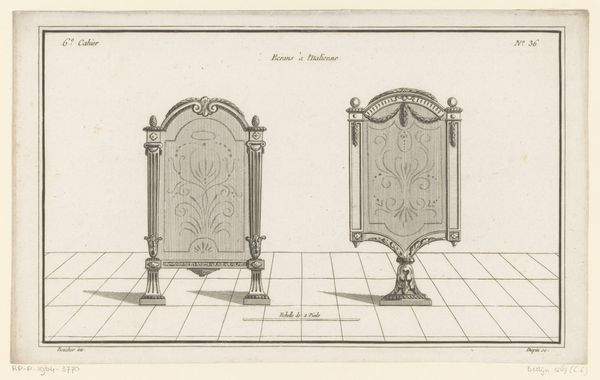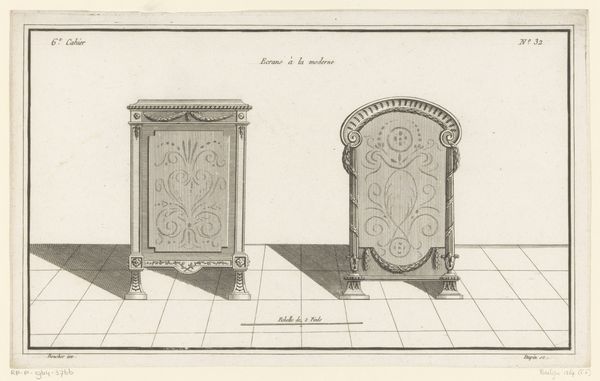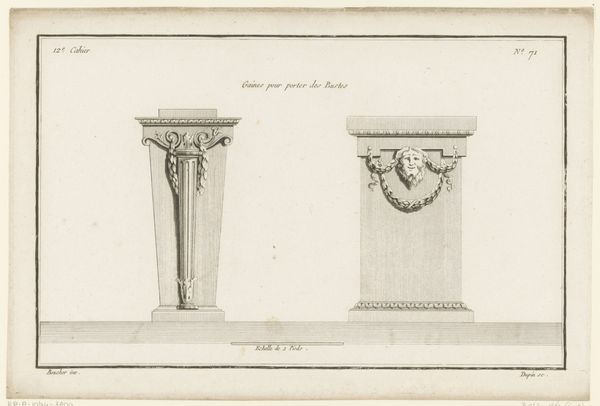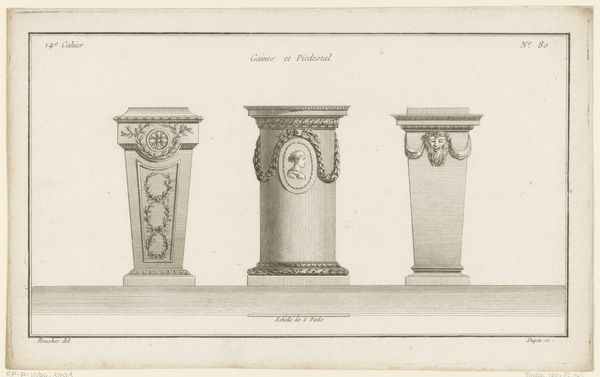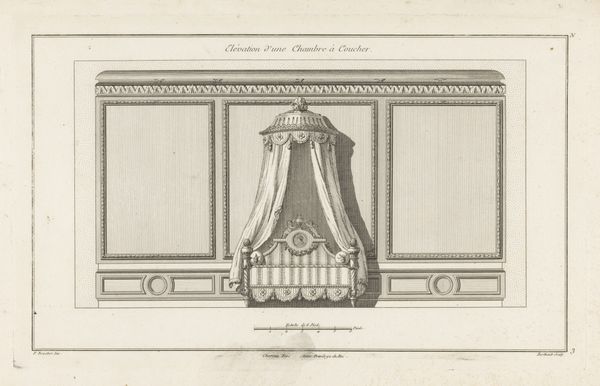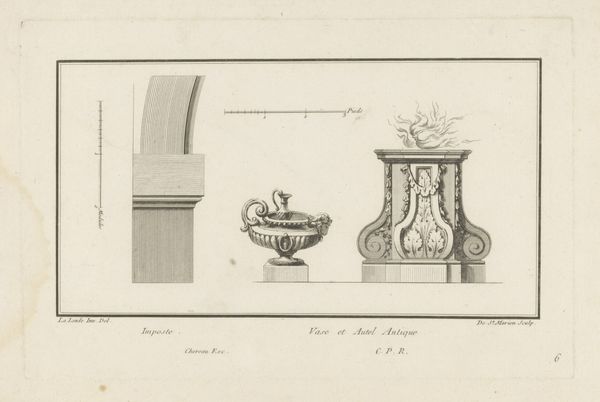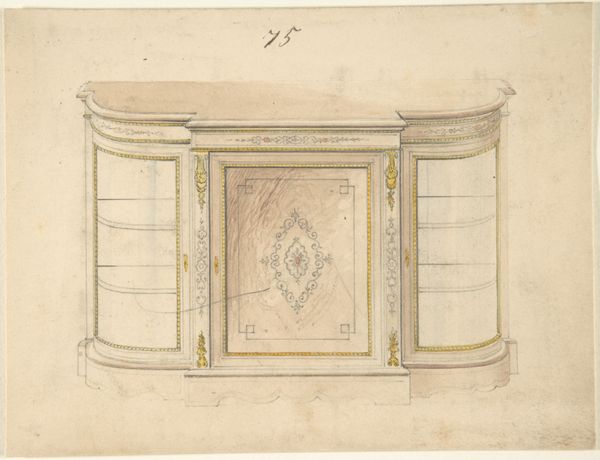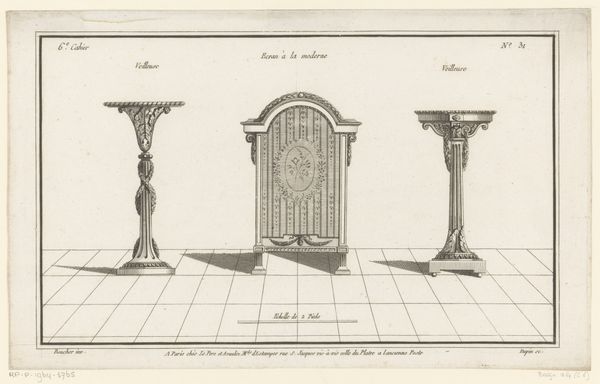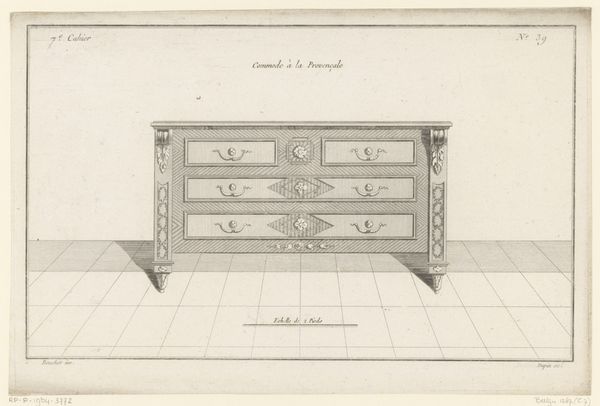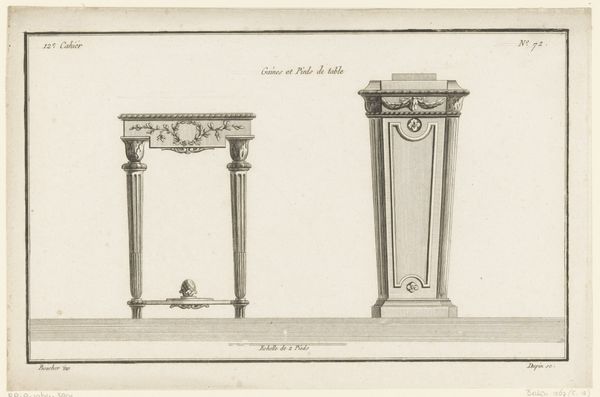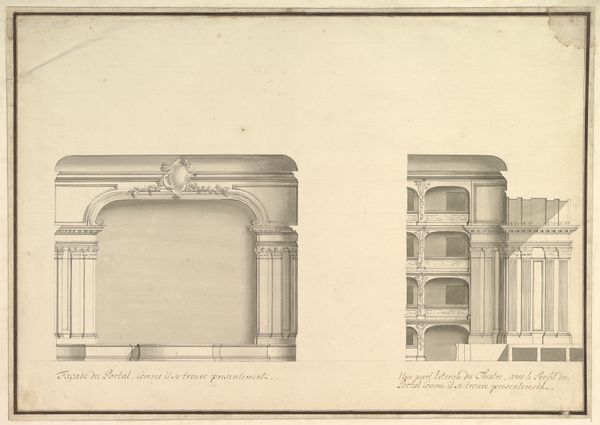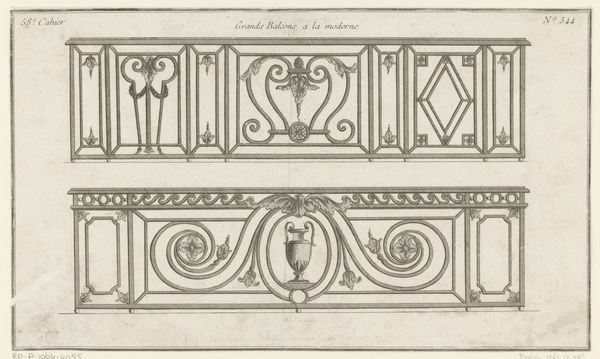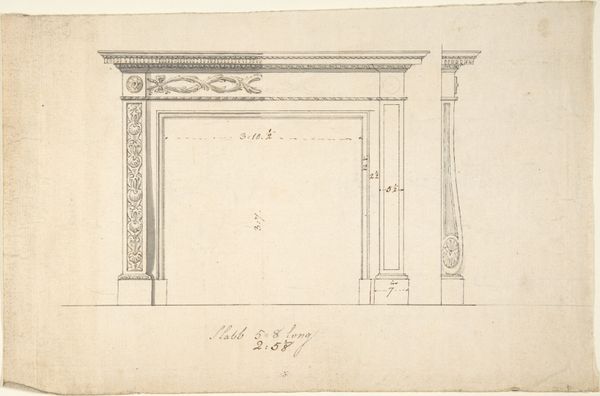
drawing, paper, engraving, architecture
#
drawing
#
neoclacissism
#
paper
#
decorative-art
#
engraving
#
architecture
Dimensions: height 201 mm, width 326 mm
Copyright: Rijks Museum: Open Domain
Jean-Baptiste Bichard created this print of two corner cabinets sometime in the mid-18th century. It provides a glimpse into the interior design aesthetics favored by the French aristocracy of the time. Consider the social hierarchy of 18th-century France. The aristocracy sought to display their wealth and status through elaborate furnishings. Bichard, as a designer, played a crucial role in shaping this visual language of class and privilege. How does this image reinforce the concept of luxury as a marker of identity? The cabinets are adorned with delicate ornamentation, reflecting the Rococo style's emphasis on elegance and refinement. The use of such intricate detailing speaks to the craftsmanship valued during this period. But it also suggests the labor and resources required to produce such items. Think about the people who would have been involved in bringing these designs to life. From the skilled artisans to the laborers extracting raw materials. These "Twee hoekkasten" offer insight into the complex interplay of art, class, and identity in 18th-century France.
Comments
No comments
Be the first to comment and join the conversation on the ultimate creative platform.
